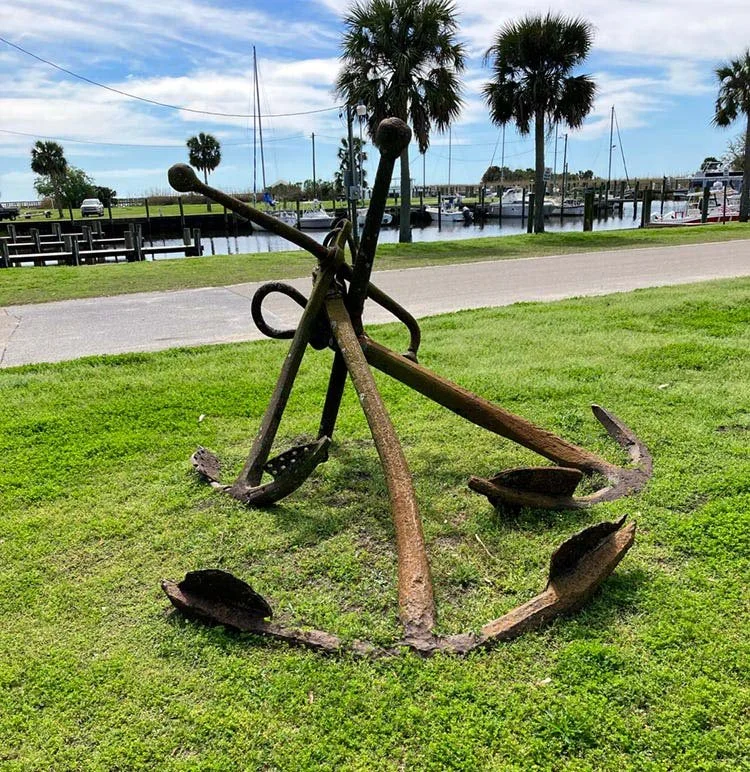Anchors and Symbols
Thanks to Duncan Blair at Traditional Sail
Anchors in Waterfront park : Apalachicola, Florida. 1965
It has been said that anchors should be understood as symbols, specifically as symbols of hope.
Hope that they will not drag, hope that they will enable the vessel to survive the storms that threaten it, and hope that they can successfully be used to kedge the vessel off of the reef or sand bar she has grounded on before the waves break her back.
Sometime in the 20th century some people in Apalachicola began to place old, rusty ships’ anchors around the town, some as yard art and some in groups in public parks and open spaces.
What the motivation for these displays of anchors was appears to have been forgotten, if it was ever known. Now the anchors, all of them old and rusty, some of the noticeably bent, are taken for granted. What people who come here from other places think about when they see the anchors is unknown. They may not give the anchors any thought at all.
So, if anchors are, in fact, symbols of hope, what was or is that hope, in the context of this small, Gulf Coast town?
I do not know how to answer this question, but I do know that it disturbs me to see these massive objects, collected and thoughtfully placed by city government and private citizens (at considerable cost and effort), displayed without any explanation of their origin or meaning; without any hint of what they symbolize.
I have concluded that if, in fact, the anchors are symbols, then they are sad symbols of a maritime heritage that today is largely unknown, or worse, ignored.
On a more positive note, consider the mid-20th century anchors of the Apalachicola oyster skiffs, used for decades to tong oysters in Apalachicola Bay.
These anchors (see photo below) are completely unlike the traditional, centuries-old design of the anchors on display here on grassy open spaces.
These oyster skiff “anchors” consist of a single discarded crank shaft from an automobile engine, attached to the oyster skiff with a short piece of chain and a few feet of well-worn rope.
The irregular, knobby shape and weight of the 18-24 inch crankshaft will hold the oyster skiff in place as you tong for the oysters. It can also be easily dragged across the bottom, with a minimum of effort, to the next tonging location, often just a few yards away.
These anchors are also symbols, representing low-income, rural American country-boy pragmatism; making something useful out of a discarded hunk of metal.
No cost, no maintenance, no moving parts; no drama.
Robb White would be proud.



